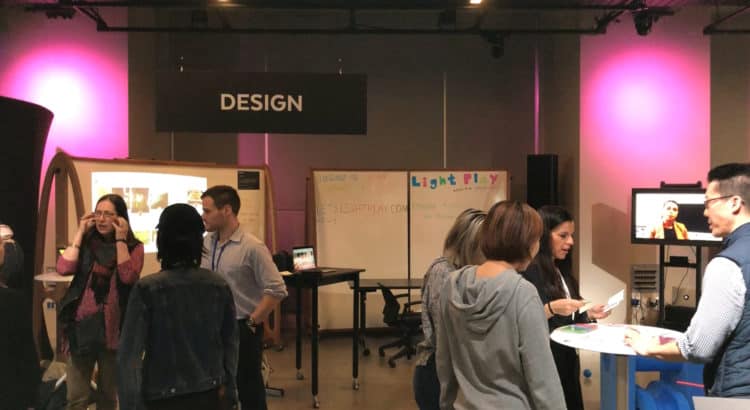In his book Changing Minds: Computers, Learning and Literacy, educational researcher Andrea diSessa extolls the learning potential of “tool-rich cultures.”
Don’t let the technological connotations of “tool” overwhelm your imagination. “Tool” is a pretty broad category.
- As an Episcopalian, I count on The Book of Common Prayer as one of my most powerful and versatile tools.
- At the evening service I lead most Sundays, little more than candles and a Shruti Box can create an atmosphere ripe for encountering the mysterious presence of God.
- My pastoral toolkit also includes the healing oil and Ministry with the Sick or Dying booklet I carry with me practically everywhere I go—just in case.
By diSessa’s definition, even the idea of ordo, the deep and ancient ritual wisdom that structures our forms of prayer, is a kind of tool.
I’ve been thinking about tools these past few weeks because I just finished a project in one of the most tool-rich spaces I’ve ever worked in: the Smith Learning Theater at Teachers College, Columbia University. Regular readers will recognize the venue’s name from the Podfest event the Media and Social Change Lab hosted there last December. This project was even more ambitious.
Digital Learning @ TC is a broad survey of the ways faculty, staff, and students at TC incorporate a wide range of digital tools in their teaching, learning, and educational research. In two months, we interviewed 21 TC faculty and trustees and identified common themes in the way digital media contributed to their research and practice.
This exhibition is (one of) the result(s).
I was blown away by the variety of experiences we were able to create for participants with the tools available in the Learning Theater: contributing to the overall effect were giant legos, location-tracking ID tags, and a small fleet of iPads, laptops, projectors, and whiteboards.
The tools expanded our sense of what was possible, even after our design was complete.
As I watched people move through the space, I kept worrying about whether they’d “get it,” whether our message would land, whether our invitation to engage would be accepted.
I was reminded again and again that meaning-making is a conversation, and that this delightful array of both high- and low-tech tools convened an especially rich dialogue between the teachers we interviewed, our team of curators, and the learners who came to explore and play with us.
So in this season when Christians celebrate new life and new possibilities, I invite you to seek out a new tool or two for your work or recreation. Better yet, make inviting tools available in your learning and even worship spaces.
As people of faith have done since the beginning, trust that tools—broadly conceived—can richly mediate our experience of the holy.
Happy Easter!
